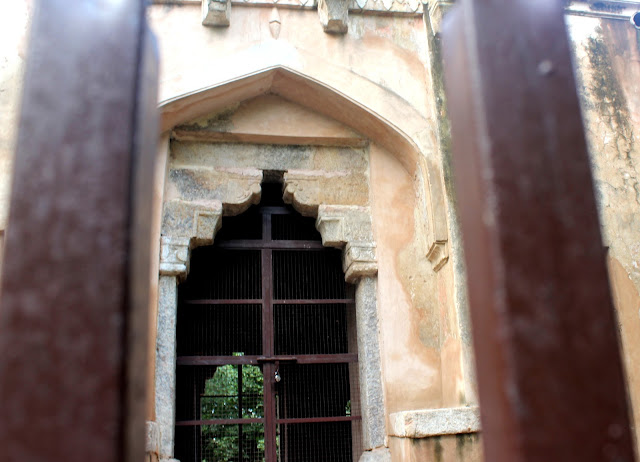"Tombs of emperors stand beside traffic junctions, forgotten fortresses command suburbs, the titles of lost destinies are woven into the vernacular, if only as street names" ~ Jan Morris
Much has been discovered about the Delhi and many travelers have documented their memories, painted with golden and silver letters. Yet Delhi remains unconquered with plenty of things to discover. In fact, there would be no contradiction if Delhi pronounced as a blanket of civilizations in spite of city. There are numerous marks and monuments which give trace to old but different burgs once existed.
Recently I was roaming around Greater Kailash Colony, one posh area which has everything to symbolise itself as a modern locality with little or no association with the past. But my fondness for sweet grilled corn drove me to a public park where I discovered a point where two civilization despite great time lag exists together.
There was an old structure in one of the corners of the park which at first sight appears as a tomb. The partially vandalised dome of the old monument revealing its oldness. The square-shaped tomb had no record of its descendant and remain even anonymous to Archeological Survey of India. Three sides opened tomb was built over the cliff, which gave an unparalleled look to the site.
I certainly had all the reasons to pull out my camera to document all for you which my eyes witnessed. Here are some frames.
2.
3.
4.
5.
6.
Nearest Metro station Moolchand
[ Text and Photos by Anwarul Hoda ]
Much has been discovered about the Delhi and many travelers have documented their memories, painted with golden and silver letters. Yet Delhi remains unconquered with plenty of things to discover. In fact, there would be no contradiction if Delhi pronounced as a blanket of civilizations in spite of city. There are numerous marks and monuments which give trace to old but different burgs once existed.
Recently I was roaming around Greater Kailash Colony, one posh area which has everything to symbolise itself as a modern locality with little or no association with the past. But my fondness for sweet grilled corn drove me to a public park where I discovered a point where two civilization despite great time lag exists together.
There was an old structure in one of the corners of the park which at first sight appears as a tomb. The partially vandalised dome of the old monument revealing its oldness. The square-shaped tomb had no record of its descendant and remain even anonymous to Archeological Survey of India. Three sides opened tomb was built over the cliff, which gave an unparalleled look to the site.
I certainly had all the reasons to pull out my camera to document all for you which my eyes witnessed. Here are some frames.
1.
3.
4.
5.
6.
Nearest Metro station Moolchand
[ Text and Photos by Anwarul Hoda ]






Comments
Post a Comment